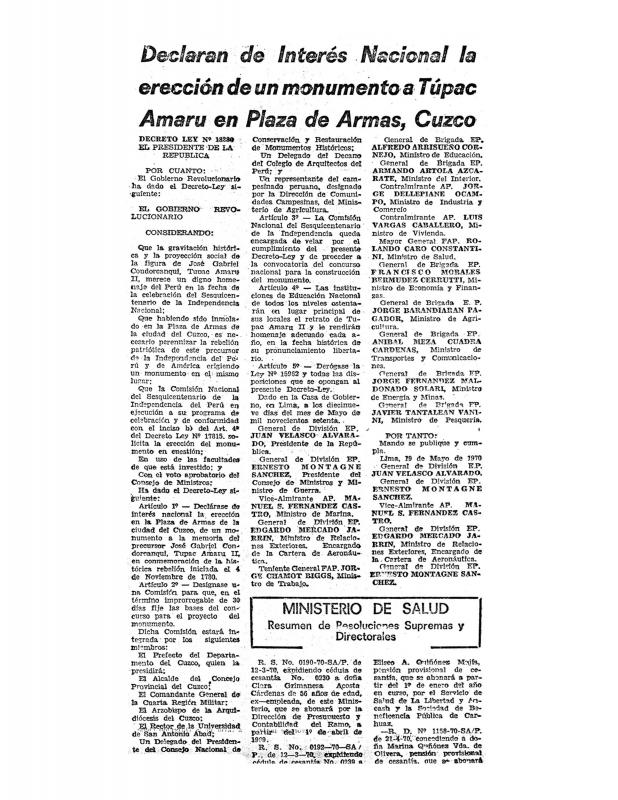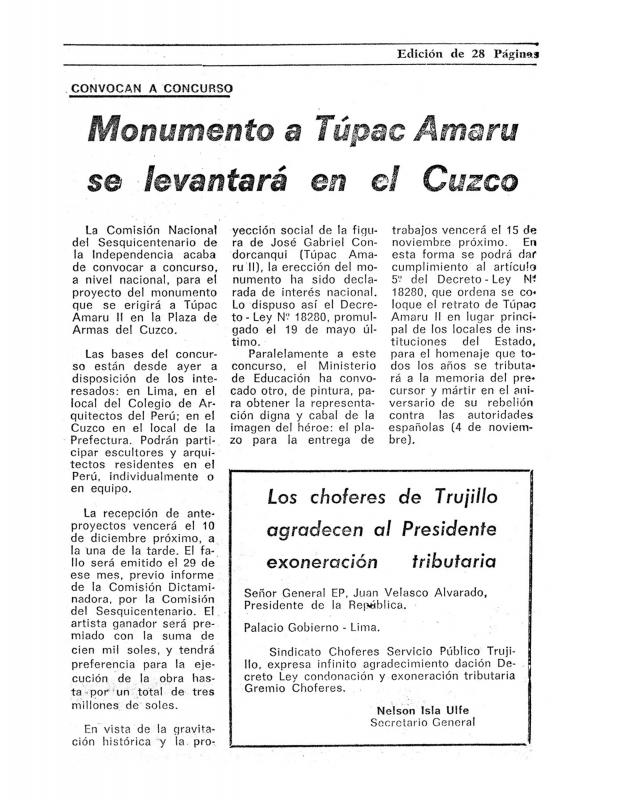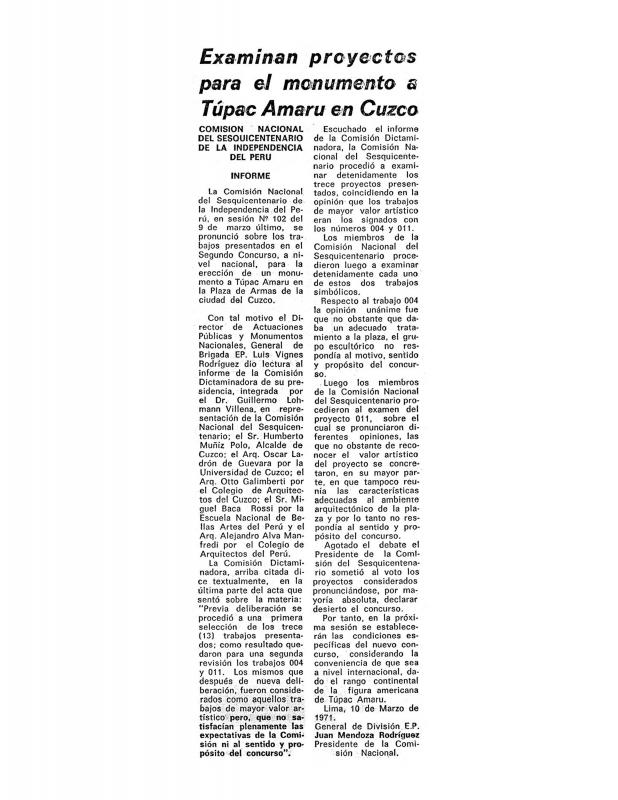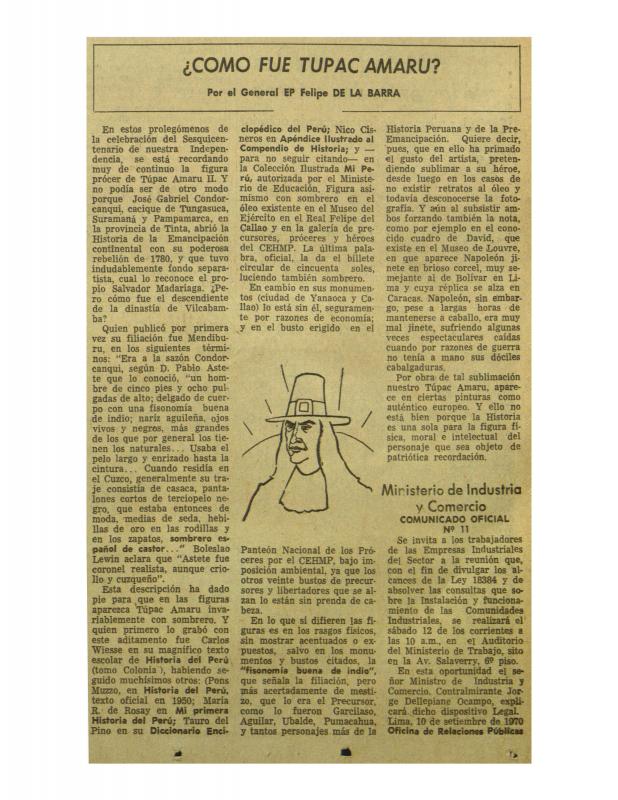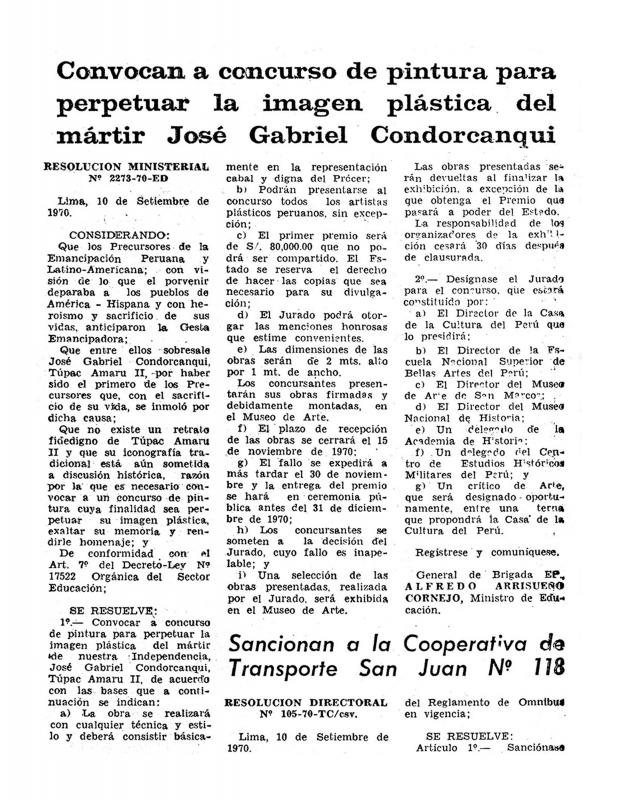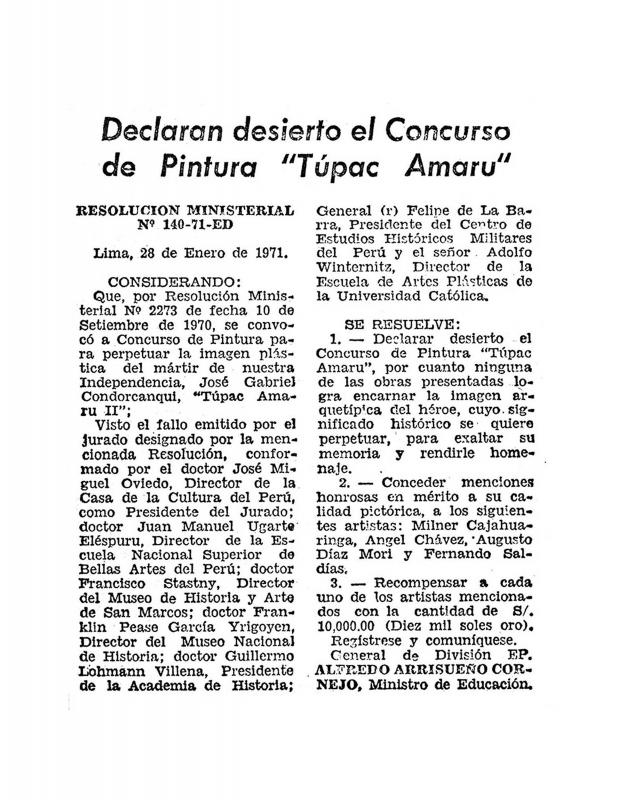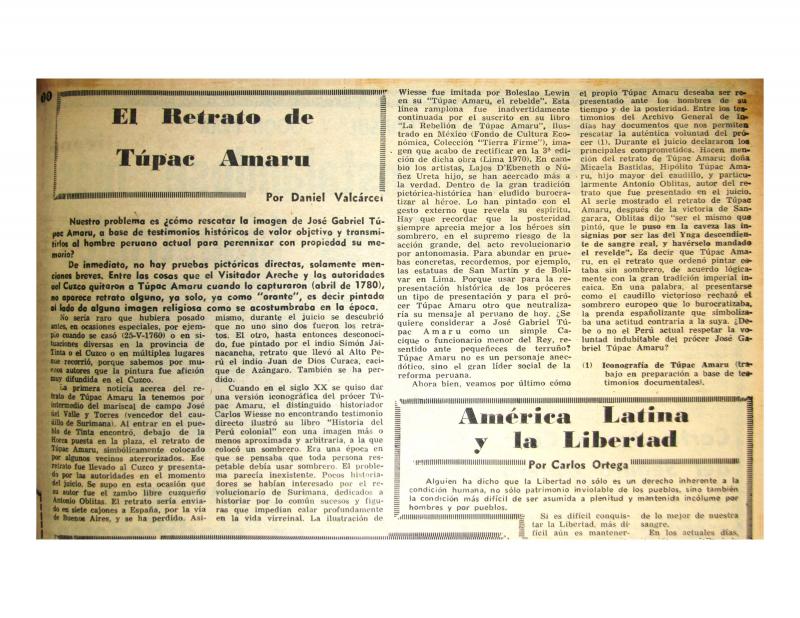In this article, the critic and cultural theorist Juan Acha (1916–95) discusses the attempts to create an official image of José Gabriel Condorcanqui, Túpac Amaru II (1738–81), the indigenous hero of Peruvian independence, since no portraits of him have survived. This article was published after a painting competition—the Concurso Nacional de Pintura—was declared “void,” as were two competitions organized to choose a design for a sculpture of the heroic figure to be erected in the Plaza de Armas, where he was executed. The article hints at the tensions that simmered between cultural conventionalism—that saw itself as the political avant-garde responsible for the reforms instigated in 1968 by General Velasco’s military government—and the contemporary ethos embraced by the artistic avant-garde that sought to express their views concerning this process. Acha was the mentor and theorist for the latter movements, but his critical support for the new regime bore no fruit.
After languishing for years in the relative obscurity of traditional Peruvian historiography, Túpac Amaru’s image was appropriated by the self-styled Gobierno Revolucionario de las Fuerzas Armadas during its first phase (1968–75), a time when the government was pioneering social reforms and exploring the use of icons as symbolic expressions of the regime and its aims. Before Acha wrote this article, and as stipulated by the Decreto Ley 18280, the May 1970 law [see in the ICAA digital archive (unattributed) “Declaran de interés nacional la erección de un monumento a Túpac Amaru en Plaza de Armas, Cuzco” (doc. no. 1139054)], two competitions were organized to find a winning design for a statue of the indigenous hero of Peruvian independence [on that subject, see (unattributed) “Convocan a concurso: monumento a Túpac Amaru se levantará en el Cuzco” (doc. no. 1053438), and by Juan Mendoza Rodríguez “Examinan proyectos para el monumento a Túpac Amaru en Cuzco” (doc. no. 1139072)]. Both competitions were declared “void.” The law also decreed that a portrait of Túpac Amaru was to be placed in all educational institutions; this led to a simultaneous effort to create a painting contest, but it too was declared void.
[As complementary reading about Túpac Amaru II, see the following articles in the archive: by General EP Felipe de la Barra “¿Cómo fue Túpac Amaru?” (doc. no. 865441); (unattributed) “Convocan a concurso de pintura para perpetuar la imagen plástica del mártir José Gabriel Condorcanqui” (doc. no. 865422); by Alfredo Arrisueño Cornejo “Declaran desierto el Concurso de Pintura ‘Túpac Amaru II’” (doc. no. 865498); (unattributed) “En busca de la imagen arquetípica de Túpac Amaru” (doc. no. 865702); by Daniel Valcárcel “El retrato de Túpac Amaru” (doc. no. 1052165); and by A. O. Z. “Túpac Amaru: ¿verdadero retrato?” (doc. no. 865460)].

